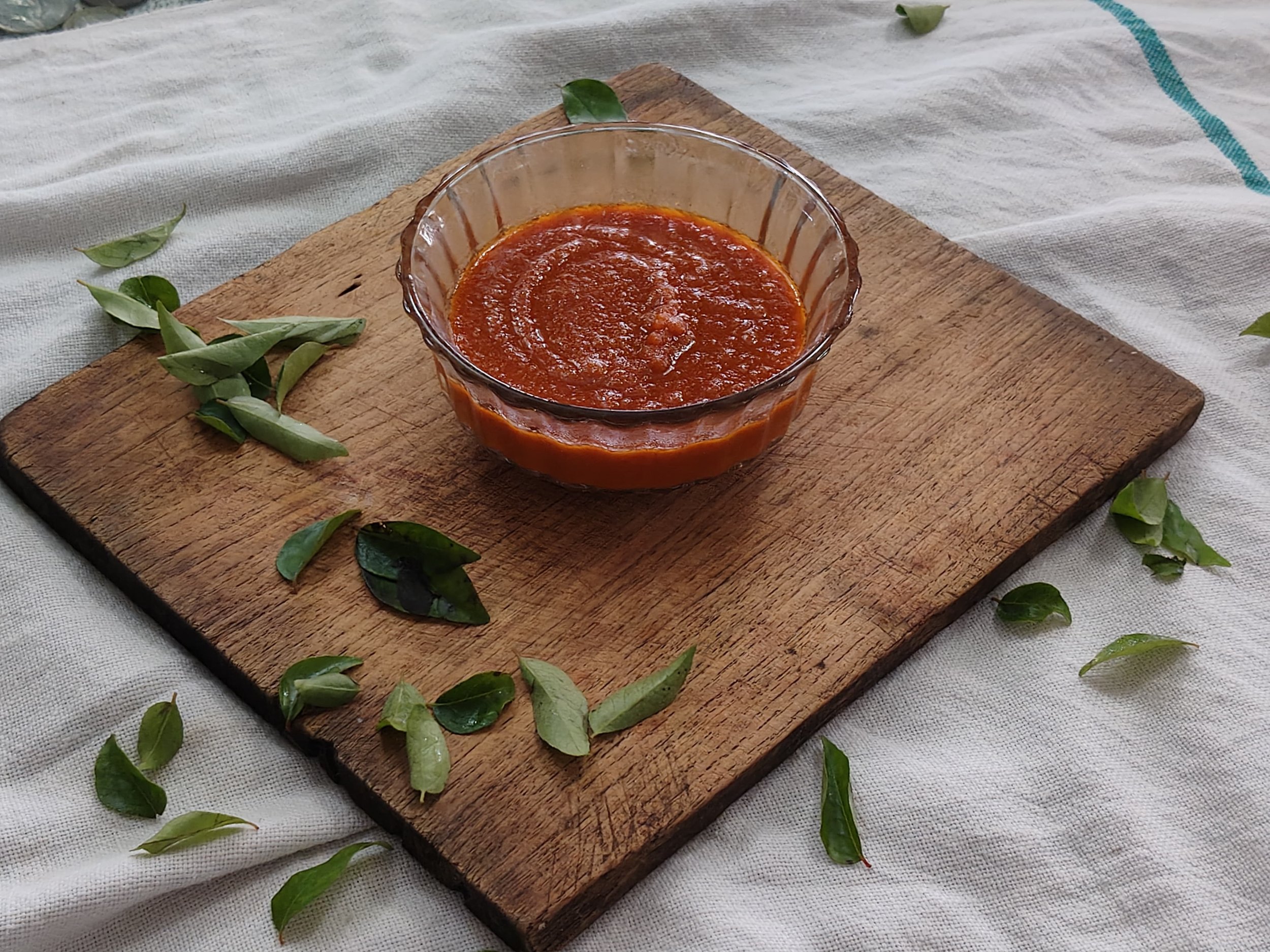Ulli Chamanthi: Where the Recipe Ends and Cooking Begins

A great cook doesn't use weighing scales and measuring instruments. All the maths happens by touch and feel, smell and taste. Rekha Joly learns this way of cooking from her mother, while watching her make a shallot chamanthi.
“There is no kanakku,” Ma says. No math. No calculation. No logic.
Like every great mathematician, a great cook does all of her ingredient-weighing and matching in her head. Especially when the recipe is one that has been passed down over generations. When it is just words passed on from one generation to the next... these tongues lick up words just as they do food.
Dosa-ulli chamanthi cannot be merely licked up. Two spoons of the thick red onion chutney and a single thin, crisp, glistening dosa is perhaps the only marriage in the world that can be consummated every day and every night.
Grabbing a palmful of shallots in her veined hands, Ma puts them in a grinder. How much? She doesn’t know.
Next, add in some diced ginger into it. How much? A piece of ginger that stands as tall as her index finger.
She sprinkles it into the grinder with the shallots, tossing a couple of them to the corner in an attempt at uniformity. The next step is to ‘heap’ in chilli powder — people can start with two tablespoons. She finishes it by sprinkling salt with her two fingers, into the grinder. To bring it to a paste, she adds a bit of water. It seems like a foolish attempt at dousing fire.
She mounts the grinder on top of the machine and turns it on. She places both hands over it and feels the friction between the blade and shallots. Every now and then, she opens the grinder and inspects the paste. She mops up the lid with her finger, and again along the sides of the grinder, and tucks it in on the edge. It is a futile quest. Because, Ma adds water, swirls it around, and switches it back on for a smoother consistency.
Both of us are crying now. The raw smell (pacha choya) of the coconut, ginger and chilli powder battered into a paste stings our eyes. My eyes are now slits. I expect nothing less from the sharpness of ulli chamanthi.
There is a cupboard in the kitchen where Ma hides all of her vessels. We don’t know why she does this, but she bends down and produces a non-stick frying pan. She pours coconut oil into the pan, and then transfers the red paste into the pan, stirring it with a wooden spoon.
She says it’s important to allow it to cook for some time, to get rid of its ‘raw-ness’. While the power and potency of ulli chamanthi lies in its raw naked form, cooking it with coconut oil creates layers. One piece of dosa dipped in this chutney is a unique experience. Is it the onion we taste, or the ginger finishing the song, or the chilli powder that hits mildly like a tide, but recedes?
She dumps more coconut oil before closing the lid. Under the pressure and the heat, it begins to bubble. First, it is small bubbles, then the lid is covered in red blotches. A fit of anger, perhaps, at its power dimming? Ma calms it down with a stir, tapping the spoon on the side of the pan. After tasting, she adds more salt, and even more coconut oil.
The ulli chamanthi is now ready.
The smell seduces me into asking for fresh ghee dosas. Ma is here, the chamanthi is ready, and the dosa maavu is fermented to perfection on the counter. It’s the only logical next step.
But how much will I eat?
It doesn’t matter… there is no kanakku.
You will find Rekha Joly in restaurants and libraries.
ALSO ON GOYA













